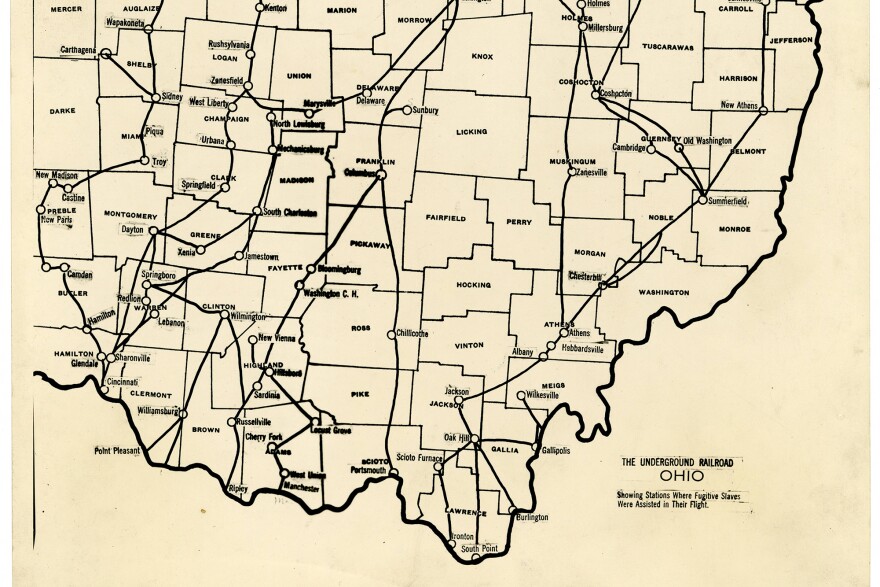Before the Civil War, thousands of people escaped slavery by traveling north through Ohio on the Underground Railroad, a loose system of safe "stations" where abolitionists and humanitarians gave aid and shelter to formerly enslaved people.
Darris Irvin wrote to WOSU's Curious Cbus saying he knew of a few stations in the area, but wanted to know more. His question: Does a registry exist of Underground Railroad stations in Columbus?
While there are many known sites across the city that were active in the Underground Railroad, there is no public register that lists them all.
According to research done by the Friends of Freedom Society, there are well over 20 documented Underground Railroad sites in Columbus, but since many of those are private homes, the addresses have not been made public.
One known site near the campus of The Ohio State University is the the Kappa Sigma fraternity house on Indianola Avenue. It was once the home of Robert Neil, son of the wealthy Neil family. Tunnels beneath the house are said to have given formerly enslaved people covert access to the Olentangy River.
Rivers and creeks were often used for travel to help conceal tracks from bounty hunters and their bloodhounds.
Another site is on High Street in the Clintonville neighborhood. Today it is a child daycare center, recently converted from a funeral home.
But in 1838, it was the Clinton Chapel. In the mid-1800s, the congregation held strong anti-slavery beliefs and the chapel’s basement provided a safe hiding place for African Americans escaping bondage.

Another documented Underground Railroad station is the home of Ozem Gardner. The successful brick mason was also a member of the Worthington Anti-Slavery Society. According to one history of Franklin County, Gardner helped over 200 people fleeing slavery.
Elsewhere in Central Ohio, sites such as the Kelton House in downtown Columbus, the Hanby House in Westerville, and the Livingston House in Reynoldsburg are recognized for the part they played as stations in the Underground Railroad.
So, while there is not a public registry of all the Underground Railroad sites, it’s no secret that many residents of Central Ohio played roles in enslaved people's journeys to freedom. And many of the buildings that served as safe havens still stand today.
Do you have a question about our region for Curious Cbus? Submit your idea below.






